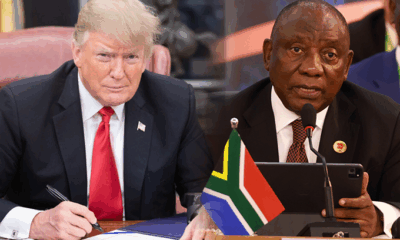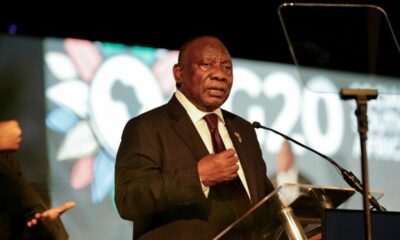Business
India and South Africa Tech Collaboration Gains Momentum Amid US-China Trade War

As the US-China trade war escalates, a surprising window of opportunity has opened for emerging markets. India and South Africa are stepping up to fill the void—particularly in semiconductors, AI, and IT.
The global technology sector is in flux. Former US President Donald Trump’s ongoing trade tensions with China have disrupted global supply chains, particularly in the semiconductor industry, forcing tech companies to rethink where and how they manufacture.
But while this turbulence spells trouble for some, it’s becoming a golden opportunity for others. India and South Africa—two countries already bound by historical ties and strategic alliances like BRICS and IBSA—are positioned to seize the moment.
India’s Semiconductor Surge
India is betting big on semiconductors. With strong government backing, policy support, and international partnerships, the country is aiming to become a global semiconductor hub. According to industry projections, India’s semiconductor market is on track to hit $108 billion by 2030, growing at a 15% CAGR.
That growth is not just about chips. It encompasses the broader digital ecosystem, including AI, data infrastructure, and innovation-led industries. India’s tech-savvy talent pool and growing startup ecosystem give it a competitive edge—especially now that multinational companies are looking for alternatives to China.
South Africa’s Strategic Role
While South Africa’s semiconductor industry is still in its infancy, it’s not starting from scratch. The country is involved in both the import and export of semiconductor materials and chemicals, with a forecasted CAGR of 7.3%, leading to revenues of $129.9 million by 2030.
More importantly, South Africa holds a critical resource advantage: it’s rich in minerals like cobalt, tantalum, graphite, copper, and silicon—all essential for chip manufacturing.
Recognising the strategic importance of this sector, South Africa’s government is promoting local manufacturing, skill development, and foreign investment. It’s also looking outward—for partners like India.
Room for Bilateral Collaboration
The current global scenario makes the India-South Africa partnership in tech more urgent—and more promising. At the heart of this collaboration is complementarity: India has the tech skills and policy momentum, while South Africa has the raw materials and a hunger for growth.
Indian companies can bring investment, training, and infrastructure support to South Africa’s tech sector. In return, India gains a strategic partner with access to critical minerals and a gateway to Africa.
This sentiment was echoed by Prabhat Kumar, India’s High Commissioner to South Africa, who said in a recent interview that both nations are now focused on growth, collaboration, and the future.
“Now, growth is the only conversation, and for that, we need international collaboration,” Kumar emphasized.
South Africa’s Trade and Industry Minister, Parks Tau, added that bilateral trade had already risen from $8 billion to $13 billion in recent years, with ambitions to hit $18 billion soon.
Beyond Trade: Building Digital Infrastructure
Collaboration doesn’t stop at semiconductors. There’s ample scope for joint ventures in:
-
Artificial Intelligence development
-
Cybersecurity and data privacy
-
Cloud computing and high-speed internet
-
AI regulation and ethics frameworks
As both countries navigate the aftershocks of the trade war, building local capacity and reducing dependency on foreign suppliers is crucial. Strategic alignment in these areas can also attract global tech players looking to diversify operations outside of China.
The BRICS and IBSA Advantage
India and South Africa’s membership in BRICS and IBSA further strengthens their ability to coordinate on digital development, economic resilience, and shared prosperity. These platforms are already fostering dialogue and facilitating collaboration in innovation, skills, and infrastructure.
With aligned values on justice, equity, and sustainable growth, both countries are ready to move from rhetoric to action.
A New Tech Axis in the Making?
Trump’s trade war may have rattled the tech world—but it’s also catalysing a rebalancing of power. For India and South Africa, this is a strategic inflection point.
With the right policies, partnerships, and investments, the two countries can build a mutually beneficial tech corridor—one that powers economic growth, creates jobs, and reinforces their sovereignty in a digitally dominated world.
The future isn’t just about who makes the chips—it’s about who shapes the ecosystem. And in that game, India and South Africa might just be ready to lead.
{Source: IOL}
Follow Joburg ETC on Facebook, Twitter , TikTok and Instagram
For more News in Johannesburg, visit joburgetc.com


























